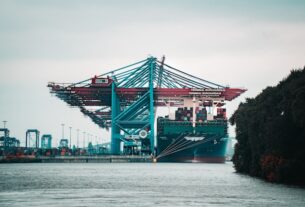Over the last couple of years Diversity, Equity, and Inclusion (DEI) have been on a rise when it comes to importance for supply chain and logistics managers. The world has changed and as new generations have entered the workforce the focus on employees, the impact enterprises have on the planet and communities are all becoming a competitive advantage. We spoke to Dana E. Stiffler, VP Distinguished Analyst, Supply Chain at Gartner about recent research in the area and its implications. More from our March edition here!
‘The focus on DEI has been accelerated due to many incidents we witnessed in 2020 in the USA and around the world,’ Dana begins. She believes that this is not just because of the wider media attention, but as a result of a genuine interest and understanding of the importance of DEI.
Supply chain organisations, in particular the large ones, were already working on DEI but the pandemic made it even more of a central point. ‘There is a sense of urgency and it has reached a critical mass,’ Dana adds.
We start talking about Gartner’s latest supply chain research with focus on DEI and what Dana found surprising.
The commitment to DEI practices has not been watered down and is stronger than ever in large, global supply chain organizations.
‘Despite having a vocal group who might oppose it, companies and people in general are really dedicated,’ Dana observes. The whole environment has improved and commitments are stronger than ever.
Beyond the commitments
It is not enough to just hire underrepresented groups and commit to a focus on DEI. So how do supply chains make sure that they deliver on their promises? There are two main areas here. One is the development of newer employees from underrepresented groups and creating an environment that fosters continuous improvement, excluding bias.
On the other hand, there also needs to be a focus on educating current leaders and supporting them to make the working environment consistent and inclusive. ‘This is about the mindset, behavior and how decisions are made,’ Dana points out.
Formally both are achieved through better HR practices, but informally it is all about the way managers communicate and make decisions. The conversation also lands on the topic of generational divide. Dana looks at how important it is to be aware of that gap and the way different generations had their career developed and the environment they had grown up in.
Does this cost a lot of money? Some programs can be constant, but organisations should not underestimate the investment in time and people. ‘Many of the leadership development programs would require more time than money. ’ But changing the recruitment process is not really associated with higher costs and spending cannot be used as an excuse.
The generation divide is not as challenging as some might expect. ‘For the first time we have four different generations working in the supply chain,’ Dana points out. Researchers have noticed the shift towards equality in all groups. ‘There is a good team dynamic and collaboration between generations.’ Generations are exchanging technical knowledge about legacy systems in the supply chains and more modern technology solutions.
But should companies be in the DEI for the long run? Dana believes that due to the way newer generations were raised DEI is embedded in their social structure.
Those generations have grown up in an environment where diversity is part of day-to-day life and is considered something normal. ‘These are the people for whom having 50% girls in an advanced science cglass was absolutely normal,’ she says. ✷



